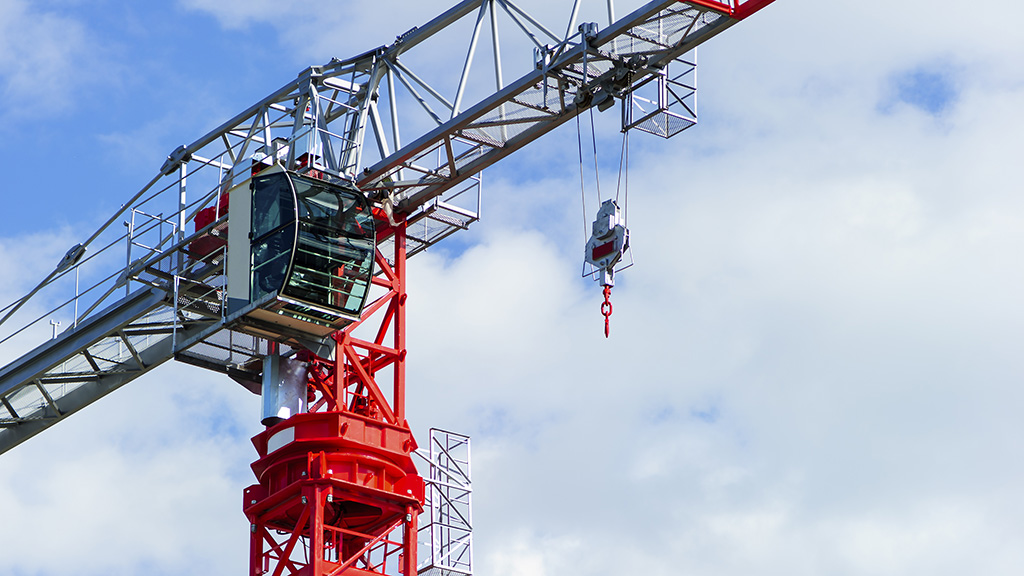The Ontario government’s recent overhaul of crane regulations reflects a significant commitment from all partners in the crane sector to keep crane operators and the general public safe says the head of the crane workers union.
Various crane-related provisions of O. Reg. 213/91 (Construction Projects) and others under the Occupational Health and Safety Act (OHSA) were updated as of Jan. 1 to improve crane safety on construction sites.
The changes include new installation, inspection and record-keeping regulations, some of which have been called for by crane safety advocates since 2008, said Mike Gallagher, business manager of the International Union of Operating Engineers Local 793.
“I think they’re very significant changes,” said Gallagher.
“It’s a fairly good overhaul of the regulations. I mean, the real deep dive was done by industry, including employers and the union and engineers.”
Ontario’s Infrastructure Health and Safety Association has produced a 53-minute video with Ontario’s Ministry of Labour, Immigration, Training and Skills Development (MLITSD) to provide an overview of the reforms, with provincial construction safety specialist Guy Taillon serving as a presenter.

The ministry declined to offer a spokesperson to discuss the reforms but highlighted key amendments include clarifying and adding new design, installation, inspection, maintenance and record-keeping requirements; requiring more comprehensive inspections of tower cranes; and introducing new, and updating existing, references to national standards relating to the design and operation of tower cranes.
The ministry said the regulations also take into account operational needs for self-erecting tower cranes and clarify requirements for cables, slings and rigging that apply to all cranes and cover hoisting operations by other equipment.
Some requirements, including those that may require equipment upgrades, will come into force in January 2025 to give stakeholders additional time to comply.
Taillon outlined several beefed-up reporting requirements in the video, which is titled OHSA Regulatory Requirements to Improve Crane Safety.
“Failure to control a crane or its load, including any rigging failure, is now a prescribed incident at construction projects in Ontario,” he said.
“The regulation requires a constructor to give written notice to the ministry of the incident. The regulation also requires an engineer’s written opinion stating the cause of the incident to be provided to the ministry within 14 days after the incident.”
Another key reform in Gallagher’s view was the decision to incorporate more external materials into the OHSA Green Book.
“A lot of the changes in terms of inspection of crane components and whatnot were already referred to in manuals that the operators had to put in place, but now it’s been transferred into the OHSA,” he explained, making them easier to locate.
Gallagher said the industry struck a committee in 2008 to recommend changes and reported to the ministry in 2013. There was little action taken until a series of well-publicized crane incidents occurred in Ontario between 2018 and 2020. The deadly collapse of a crane on a construction site in Kelowna, B.C. in 2021 also focused attention on crane safety, as did fatal incidents in Seattle and New York City.
“The ministry started to look back on some of the recommendations that have been made by the operating engineers and the Operating Engineers Training Institute of Ontario and the IHSA hoisting committee back to 2013, and paid closer attention to them and decided to make the changes that were being recommended by industry, which, while long overdue, were certainly welcomed,” Gallagher said.
There has been widespread consultation among stakeholders in developing the reform package, Gallagher said, including the formwork sector, engineers, the Ontario Crane Rental Association (OCRA) and individual GCs, and the co-operation will no doubt continue as parties work towards education and implementation.
The operating engineers have established a permanent safety committee with the OCRA and they will also be reaching out to the highrise forming association.
But beyond the regulations, Gallagher said, the biggest imperative to ensure crane operators and others are safe is addressing the pace of work.
“At the end of the day, like everything else done, what you need is time. Inspections and maintenance of these crane components takes time,” he said, noting it takes 15 minutes out of an allotted inspection just to climb a crane tower.
“One of the things that we would like to do is sit down with our employers and talk about how we afford the time required in order to meet the requirements under the crane regulations now under the OHSA.”
Follow the author on X/Twitter @DonWall_DCN.




A light visible by workers on the ground noting green yellow and red. Green safe weight lift yellow caution close to maximum lift weight and red for over loaded over weight according to crane manufacturer design and requirements.